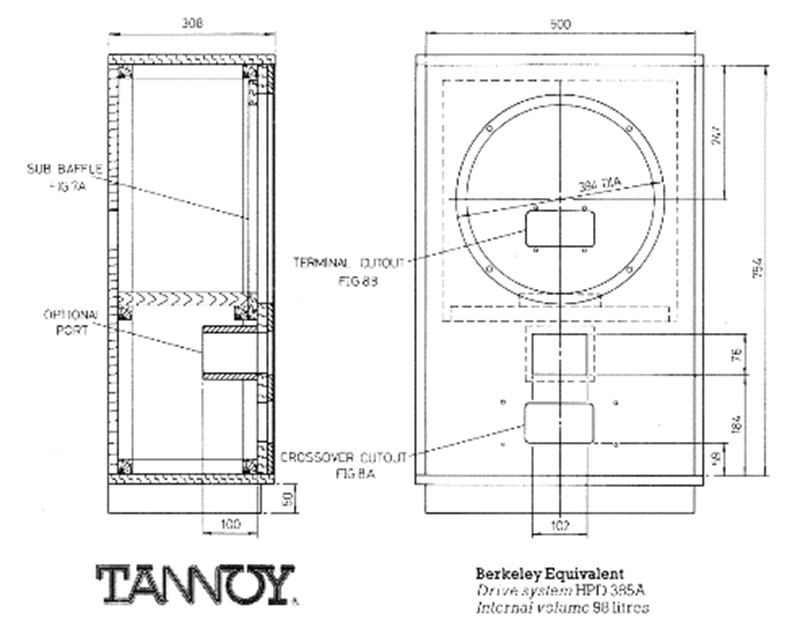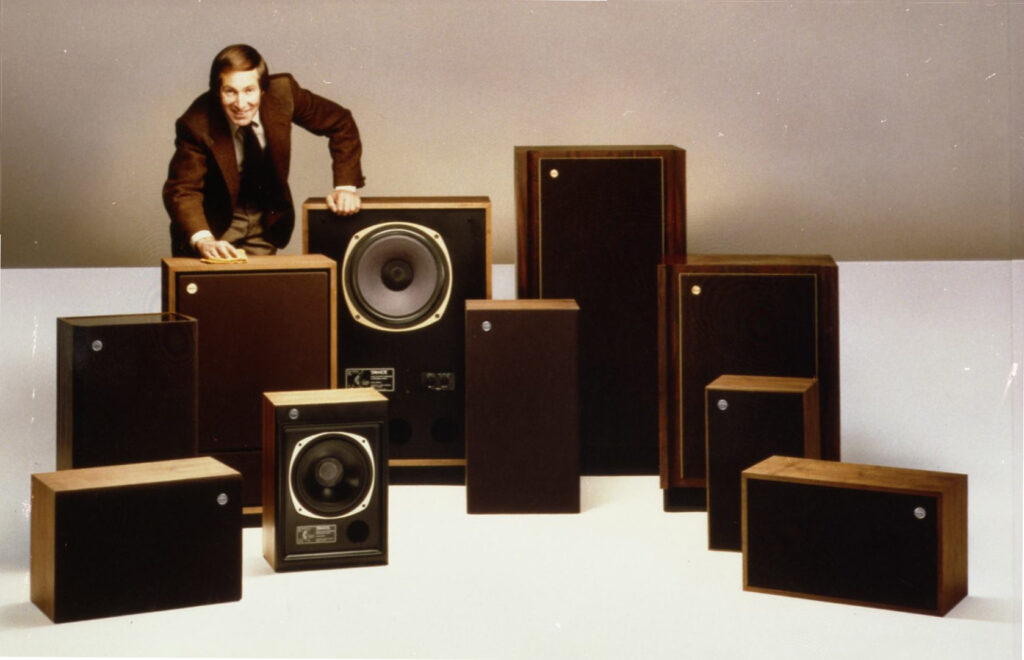Transparent clarity, deep bass, and “Invisible Sound” from German audio company ADS. Background: One of the lesser known hi-fi brands of the ’70s, ADS (Analog and Digital Systems) […]
Berkeley/Arden: Classic Home Speakers Featuring Tannoy’s Iconic Dual Concentric Driver System

Favorites from the ’70s beloved by hi-fi enthusiasts and music lovers alike including Donna Leake and Ed Seven of Vintage Hi-Fi Plants.
Background:
Founded in London by Guy R. Fountain, Tannoy first gained widespread recognition in the early ’30s with their public-address speaker systems that would be used for famous sporting and state events, as well as for the Ministry of Defense during wartime. By the ’40s, Tannoy systems were so widely used that the term “tannoy” came to be used in British English for any public-address system. In 1947, the company made their second great innovation with the Dual Concentric driver, which placed the tweeter behind the centre of the medium or bass driver. This revolutionary technology would come to define Tannoy and the later audio industry with Tannoy monitors being widely used in countless studios around the world including Abbey Road, Air and Decca.
One of their most iconic home speaker designs, the Berkeley/Arden was released in 1976 and is a substantial sized two-way loudspeaker system that provided the high power handling capacity and sensitivity of their famous studio monitors in a more compact enclosure. The Tannoy HPD Integrated Drive system consists of a direct radiator bass unit and a high-frequency horn-loaded compression driver both located within the same frame and magnet assembly, which is why it is known as the dual concentric system.

“The Berkley’s just sounded, well, like the music was supposed to sound, like you were there. Actually most recording studio’s mastered their recordings using either Tannoys or JBLs.”
The speakers are also beloved for their cabinet design which features a dual ducted port that provides remarkable bass response for the enclosure size, and a front recess mounted loudspeaker to ensure smooth extended treble. In this ducted 2-way system, the low frequency radiator is 15 inches (381 mm) in diameter and carries the frequency range from 35 Hz to the crossover at 1 kHz. The coaxially mounted 2 inch (51 mm) compression driver then takes over from 1 kHz upward.
The Berkley/Arden is a substantial size, but tastefully accented so that it does not overwhelm a normal living room. The enclosure is finished in oiled walnut with two removable brown cloth covered grilles. The upper and larger grille covers the loudspeaker cone and, while removable, need not be removed by the user. The lower grille covers two switched equalizer controls. These controls are intended to allow for minor higher frequency adjustments which a user might set to suit his particular tastes in music reproduction.
Specifications:
- Dimensions: 39 x 26 x 14.5 (Arden) 33 x 21 x 12 inches (Berkeley)
- Net Weight: 56kg (Arden), 40.8kg (Berkeley)
- Nominal Impedance: 8Ω
- Frequency Response: 35 Hz-30 KHz (Arden), 35Hz to 20kHz (Berkeley)
- Recommended Amplifier: 85W
- Crossover Frequency: 1000Hz
Price:
The Tannoy Berkeley originally sold for $480 in 1976. Unfortunately, the Berkeleys and Ardens can be a bit difficult to find outside of the UK even on used hi-fi boards and auction sites. A pair of Berkeleys will typically go for around $3,000, while Ardens can cost upwards to $10k depending on condition. They can also be expensive to repair as Tannoy is no longer in business.
Sound Testimonials:
“Low level listening is INCREDIBLE. The Tannoy sound amazing at very low SPL, the bass is still very present, the dynamics seem intact, harmonics untouched. WOW. There’s a palpability to the music at low level that is truly wonderful and suits my needs a lot. This is something I did not expect and very happy to realize and truly quite a few leagues better in that department than the Harbeth, Amphion, and KEF LS50 we have.”
“They seem to have a depth of sound, a scale that I have not had before from any of the previous speakers that I have ever owned, and I can now see why some people are quite so passionate about them.”
“Forget technicalities, the Tannoy sounds slightly coloured compared to the Harbeth SHL5+. But it seems that with Tannoy, I very easily forget any flaws or coloration and really fall in the music. It’s even hard comparing SHL5+ with Tannoy because it’s such a different sound. There’s a presence and an immediacy in the mids with the Tannoy that makes instruments and vocals sound more realistic, more weighty (of course since its a 15 inch), perhaps less detailed but more grounded in the intention of what the musician is playing. The image is immense; its a very big sound that engulf you. the Harbeth are laid back in comparison but in reality it’s more like its the Tannoy that may be slightly forward in nature or perhaps simply Horn vs Tweeter? The bass is absolutely coherent with the midrange. It doesn’t seem to be slower than the mids at all, and I’m relieved about that. They can play LOUD!!!!!!!”
“I bought a pair of Berkleys new in ’77. I had listened to every high end speaker I could find. The Berkley’s just sounded, well, like the music was supposed to sound, like you were there. Actually most recording studio’s mastered their recordings using either Tannoys or JBLs.”
“Excellent transient response and top end purity are only two of the attributes that make Tannoy loudspeakers so special. When you add in their high resolution midrange and coherency — you have the basis for a very fine loudspeaker.”











